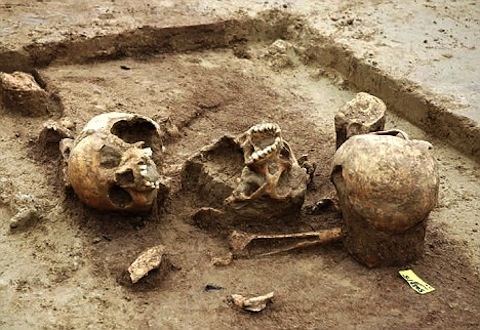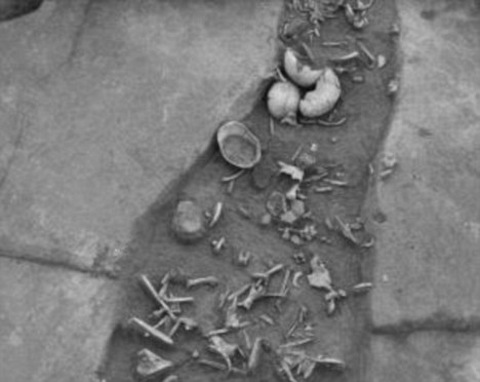Unearthing evidence of cannibalism in Germany
Archaeologists in Germany have recently obtained evidence of a large-scale cannibalism with victims including men, women and children.
Archaeologists have unearthed 500 corpses buried in 7,000-year-old pits near the village of Herxheim, southwestern Germany.
The marks on the bones of corpses showed that they had been skinned and sawn by the techniques that humans had applied to animals. Some bones may have been smashed to absorb marrow. Scientists also claim that there are victims who have been "skewered".
Archaeologist Bruno Boulestin said: "We have specimens of animal bones skewered on the stakes and baked. We also find similar traces on the bones of some corpses. It is possible that a large number of them will be raised. to thousands of people living in the Herxheim area who are victims of the cannibalism. "

The marks on the bones of the corpses showed that they had been skinned and sawn off as the ancient people ate the animals.
Currently, 10 bodies have been analyzed, including 8 adults and two children aged 6 to 16. However, the number of corpses in this pit will increase even more because the excavation process has not yet ended. .
It is suggested that cannibalism took place when the early agricultural society suffered from hunger.

In southwestern Germany there are more than 500 corpses of victims of cannibalism
In addition, the 6,000-year-old skeletons in some French caves were excavated and analyzed in the 1980s, showing convincing evidence of continued cannibalism during the Neolithic period.
However, some experts argue that the bodies of German and French are victims of sacrifices during which sacrifices are just one of the rituals.
- Species ancestors who once eat cannibalism
- Evidence of cannibalism discovered
- The T-Rex tyrant dinosaur has a homophobic behavior
- Famous novelist predicts cannibalism
- Why do people eat people?
- Explaining the cause of human cannibalism
- 4 the opposite in Germany but few people know
- Plague Buruli mysteriously spread in Australia
- Why is cannibalism unacceptable in humans?
- Cannibalism often happens alone
- Tadpoles also eat cannibalism when food is scarce
- Rare evidence of ancient carnivorous custom
 Discovered an ancient centipede fossil 99 million years old
Discovered an ancient centipede fossil 99 million years old Discovered bat-like dinosaurs in China
Discovered bat-like dinosaurs in China Discovered a 200-year-old bronze cannon of the coast
Discovered a 200-year-old bronze cannon of the coast Discover 305 million-year-old spider fossils
Discover 305 million-year-old spider fossils